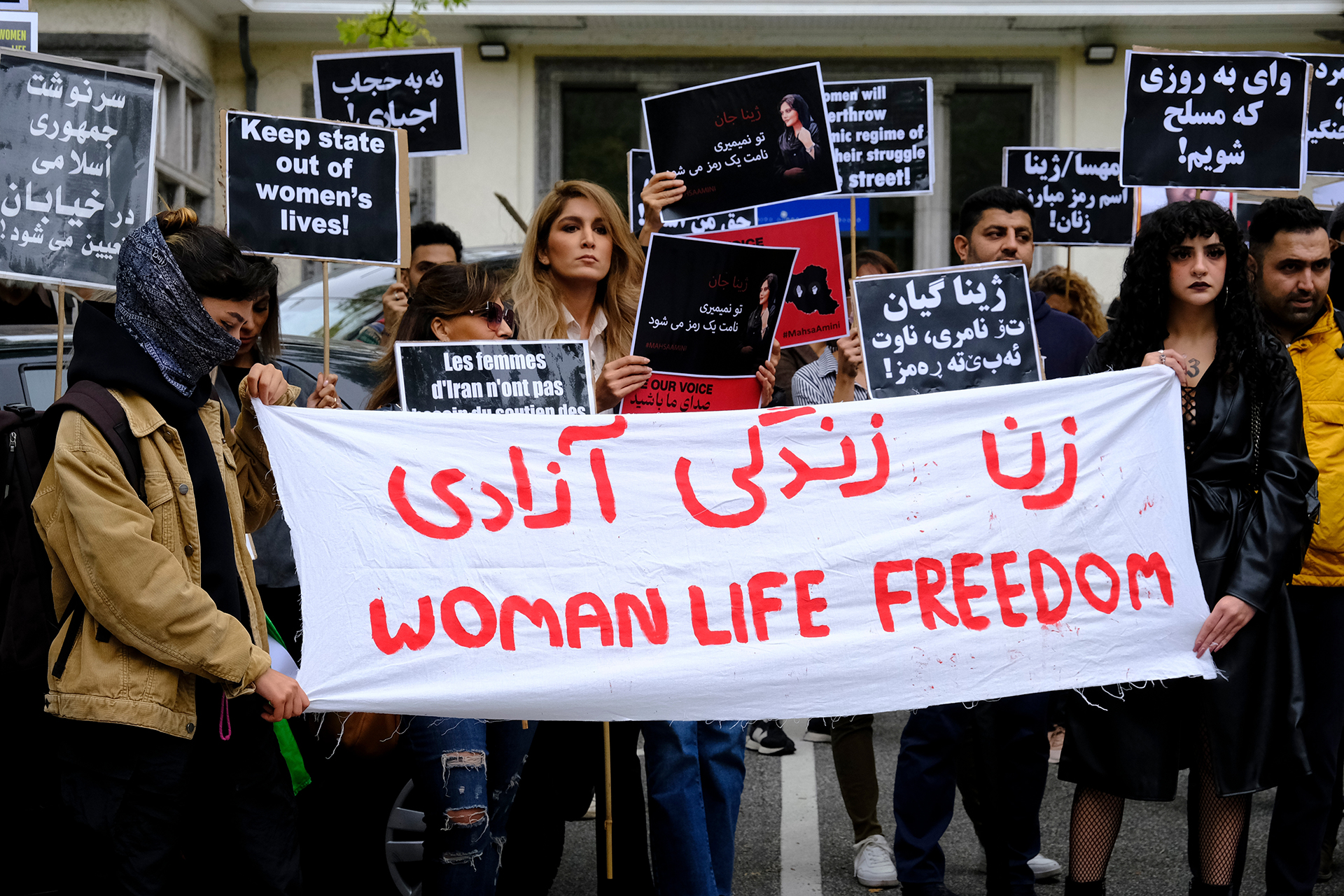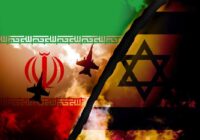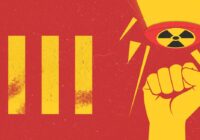There have been more than six months of nationwide protests in Iran. Nationwide unity has emerged among seemingly disparate groups: the young and the old, women and men, and even very different ethnic groups. Terrified by this unprecedented wave of activity, the Islamic Revolutionary Guard Corps (IRGC), known in Iran as the Sepah, invaded the streets of many cities, towns, and even some villages in an attempt to clamp down on the unrest. Nevertheless, the atrocities have failed to deliver what the Islamic Republic of Iran’s Supreme Leader, Ayatollah Ali Khamenei, has wished for: the total crackdown of the protests. The scapegoating of ordinary Iranians for the miseries brought upon by the corruption and mismanagement of Khamenei’s regime has failed to work.
Between September 17, 2022, and January 23, 2023, Iranian security forces killed 525 protesters during the nationwide protests in response to the murder of Mahsa Amini, a 22-year-old woman who was taken into custody by Iran’s religious morality police in September last year. Sham trials and unjust executions have begun, and, according to the most recent figures, at least 100 of those who have been arrested are in imminent danger of execution. Yet the protests have not stopped.
The new wave of protests poses a serious challenge to the Islamic Republic of Iran’s security apparatus. The distinctive unity that has emerged among Iranians is unparalleled. In fact, Iran is experiencing a unity that has not been seen since the 1979 revolution. Simultaneous protests in more than 200 cities have exhausted security forces.
A Spontaneous Uprising, Not a Minority Movement
This new uprising has not been organized by any party or organization from abroad. It has occurred organically and is led by Iranians who reside in the country. The regime falsely lays the blame on Kurdish “separatists” who receive aid from foreign services and on opposition groups outlawed by the Islamic Republic of Iran. Other non-Persian groups often blamed include Arabs and the Baluch.
Scapegoating non-Persians in Iran is not a new strategy. The establishment has done this for more than four decades in response to any sort of protest against injustice, corruption, or incompetence in the government. This strategy of scapegoating minorities has failed this time. The majority of Iranians do not believe in the phony claims of the Islamic Republic strategists. In fact, the nationwide solidarity is so strong that Persians have been chanting Kurdish slogans. For example, Jin, Jian, Azadi is translated into Farsi as Zan, Zendegi, Azadi, and it is translated into English as the now-familiar “Woman, Life, Freedom.” In addition, Azeris have been chanting slogans supporting Kurdistan, and protests have taken place in Zahedan in solidarity with Kurdistan and vice versa.
As protests intensify, the Islamic Republic of Iran accuses the Kurds of separatism. The myth that Kurds are responsible for Iran’s woes has been partially successful for more than four decades. Persians, domestic or those in exile, do not accept the idea of a Kurdish state. Therefore, it has been relatively easy for the Islamic Republic to crack down on Kurds in the name of “fighting separatists” without facing any criticism from the Persian opposition groups in or outside the country.
A History of Kurdish Persecution
Iranian Kurds are mainly concentrated in the four northwestern and western provinces of Kurdistan, Kermanshah, West Azerbaijan, and Ilam. A group of Kurds have also settled around Quchan in the northeastern province of Khorasan. They have a history of rebelling against Tehran.
The previous Iranian regime, led by Reza Shah and then his son Mohammad Reza Shah persecuted Iranian Kurds as well. In 1967, the Iranian military crushed a Kurdish uprising and hanged six of the movement’s leaders, five of whom were executed in Sanandaj, the capital of the Kurdistan province, one of Iran’s majority-Kurdish provinces.
It is important to note that the Shah’s Iran supported Kurds in Iraq to weaken their western neighbor. It even sent two military units into Iraqi territories to help Mustafa Barzani, one of the prominent Iraqi Kurds who led numerous insurgencies against Baghdad, in the 1960s and 1970s for an independent Kurdistan. Iran changed this policy when Mohammad Reza Pahlavi struck the 1975 Algiers Agreement with Iraq.
This ended their dispute over the Shatt-al-Arab (Arvand Rud) border and Iran withdrew its support for Iraqi Kurds. After this, both countries turned on the Kurds. Because of the Shah’s betrayal, Iranian Kurds took an active part in the 1979 revolution. They hoped for autonomy and a Kurdish parliament after the revolution.
Ayatollah Ruhollah Khomeini did not grant the Kurds any autonomy or self-rule. In fact, he crushed the Kurdish resistance brutally. Khomeini appointed Sadeq Khalkhali as the chief justice of Iran and sent him to the Kurdish areas along with a convoy of executioners. He also sent the military and the IRGC to crack down on the Kurds. Khalkhali sentenced hundreds of Kurds to death by firing squad in sham trials. The Kurdish Democratic Party of Iran (KDP-I) and Komele, a Marxist party in Iranian Kurdistan, were both outlawed. However, resistance continued in Kurdistan’s mountains.
Injustice, Especially Economic, Fuels Minority Resentment
Generally, separatist movements among minorities are a result of injustice by the majority. In Iran, both before the 1979 revolution and after, minorities have been treated as second-class citizens. They have been deprived of fundamental rights and basic resources. Despite being known for its rich diversity of different ethnicities such as Kurds, the Baluch, Arabs and Azeris, Iran’s only official language is Persian. This means that children in Kurdistan or Ahwaz are deprived of studying in their mother tongue.
This one-language policy leads to intense disregard of scholars with minority backgrounds. When the only official language is the language of the rulers, it leads to a bitter atmosphere among the minorities. Other acts of persecution lead to further resentment and many of Iran’s minorities desperately want autonomy if not freedom from the iron grip of Tehran’s mullahs.
As is well known, economic grievances often cause protests and revolutions. In Iran, poverty and unemployment are running high. Minorities are suffering the most. According to the Chamber of Cooperatives of the Islamic Republic of Iran, the national gross product of provinces of Sistan and Baluchistan, Kurdistan, and Ilam are among the lowest in Iran.
Poverty and a high unemployment rate have forced many Iranian Kurds into the minacious path of becoming a kolbar, a uniquely Kurdish word that literally translates as a porter who carries goods on his shoulders. These men risk their lives by carrying heavy loads of more than 60 kilograms of goods via mountainous donkey paths from Iraq into Iran while dodging bullets from the Iranian border patrols for a pittance. The mortality rate of the kolbar is very high. In 2022, 290 were killed or injured.
Other ethnic groups are suffering enormously as well. The Baluch who live in the Sistan and Baluchistan province on the borders of Pakistan and Afghanistan lack economic opportunities, suffer from high unemployment rates and have low access to education. Discriminatory policies have forced many into becoming soukhtbars, which is Farsi for fuel porters. During one day alone on February 22, 2021, Iranian security forces killed at least 10 soukhtbars, including a 17-year-old boy.
It is obvious that there is a great unity among Kurds, other ethnicities and the Persians during the current protests. However, Kurds, Baluchs and Arabs have only had bitter experiences with the central government in Tehran. Two Iranian regimes in a row have failed to treat non-majority ethnic groups with dignity and respect. Neither the Shahs nor the Ayatollahs have delivered a fair share of the pie to other ethnicities who live far away from Tehran. This raises the very important question: What might a third Iranian regime do to minorities? Will it continue the despotic and discriminatory policies of the previous regimes? Or will minorities finally get the autonomy, justice and respect they deserve?
[Erica Beinlich edited this piece.]
The views expressed in this article are the author’s own and do not necessarily reflect Fair Observer’s editorial policy.
Support Fair Observer
We rely on your support for our independence, diversity and quality.
For more than 10 years, Fair Observer has been free, fair and independent. No billionaire owns us, no advertisers control us. We are a reader-supported nonprofit. Unlike many other publications, we keep our content free for readers regardless of where they live or whether they can afford to pay. We have no paywalls and no ads.
In the post-truth era of fake news, echo chambers and filter bubbles, we publish a plurality of perspectives from around the world. Anyone can publish with us, but everyone goes through a rigorous editorial process. So, you get fact-checked, well-reasoned content instead of noise.
We publish 2,500+ voices from 90+ countries. We also conduct education and training programs
on subjects ranging from digital media and journalism to writing and critical thinking. This
doesn’t come cheap. Servers, editors, trainers and web developers cost
money.
Please consider supporting us on a regular basis as a recurring donor or a
sustaining member.
Will you support FO’s journalism?
We rely on your support for our independence, diversity and quality.







Comment